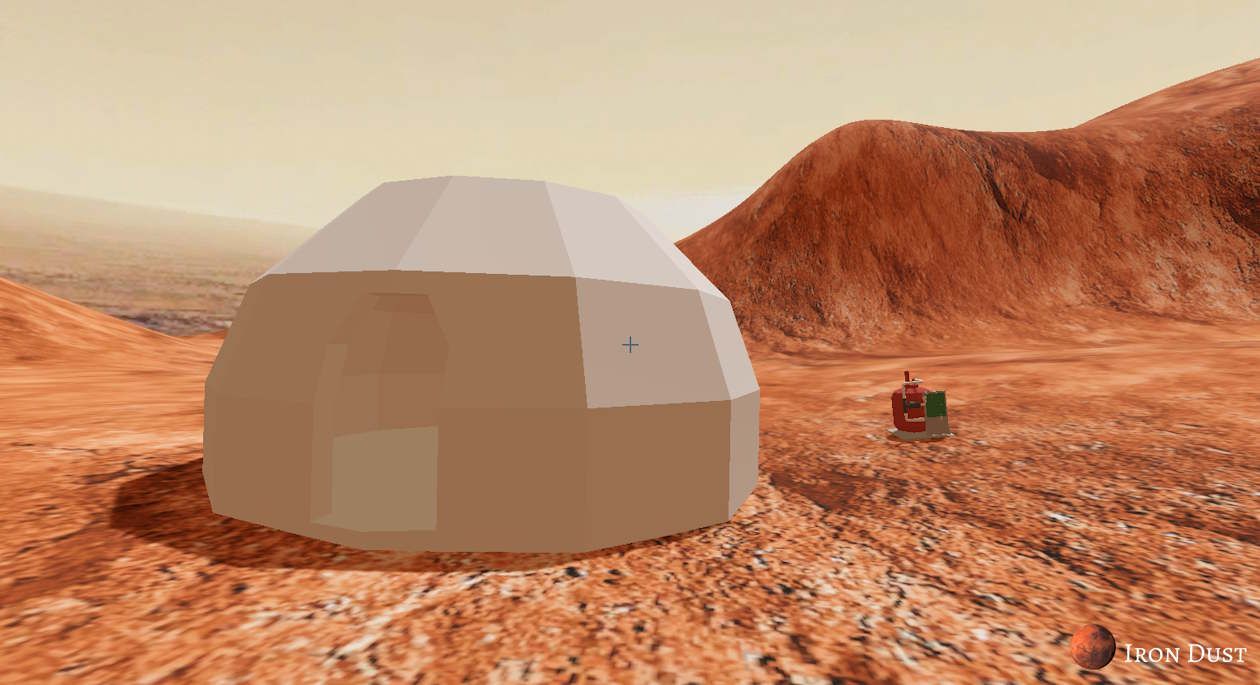Iron Dust Chapter 1: A Blender Odyssey
- Category:
- Projects
- Author:
- Ohad S. Farkash
- Date:
- 06/24/2024
For years, I've been a part-time indie developer. I've worked in the shadows tirelessly so that you can benefit from absolutely none of my unpublished works. But now, I am poised on the precipice of a paradigm shift. I intend to make public, in some small way, my ventures in the land of virtual media we call video games.
Behold:
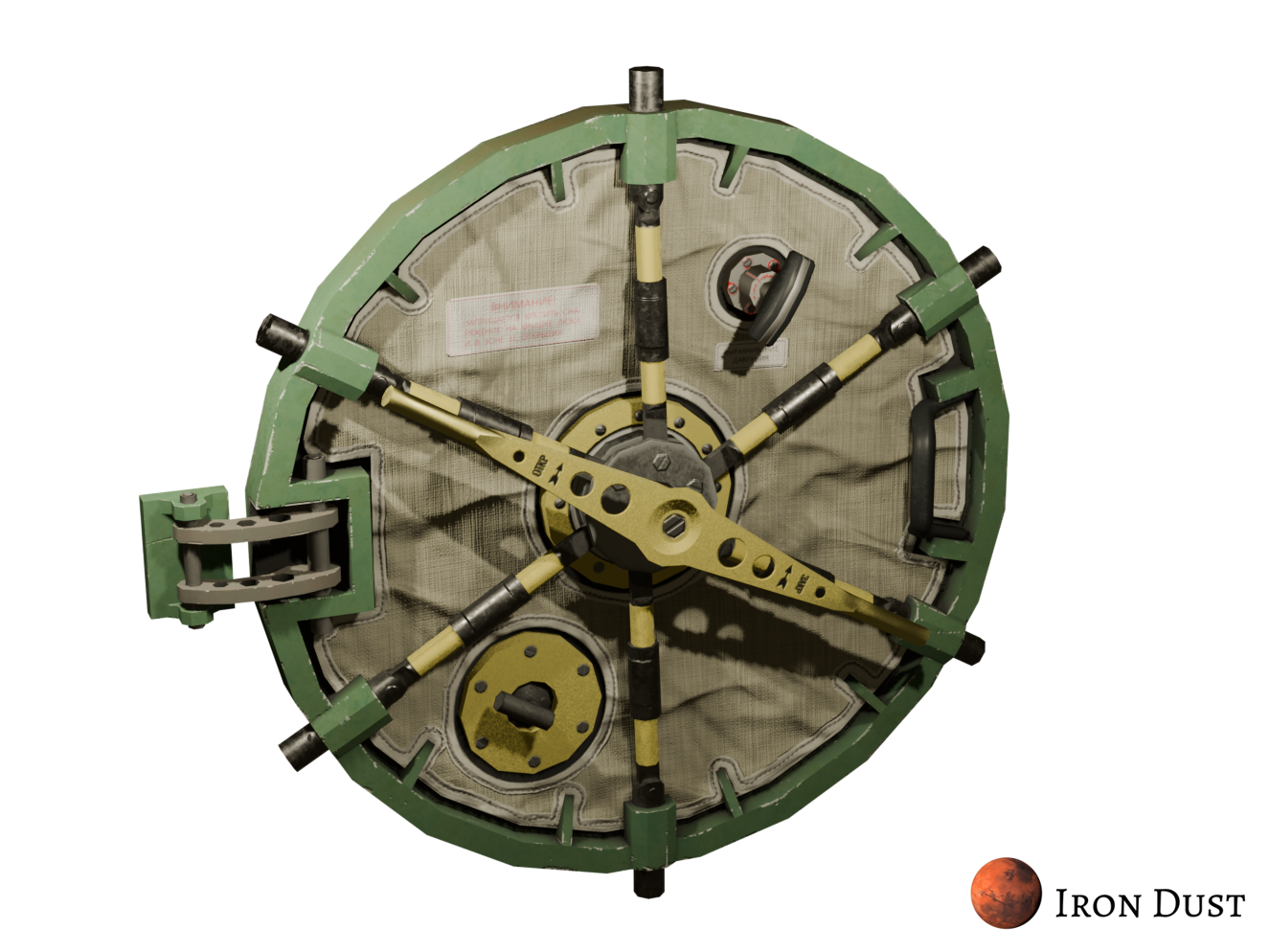
A hatch
Now, those of you who are actually interested will have many questions, and I guarantee I will address most of them in the following paragraphs. Probably.
By Jove!
An idea had sprung on me recently to make a game, and my thematic choices found me in 1985 amidst the decline of the Soviet space program. I would, by imagination and a brutal amount of hotkey mashing, endeavor to do what Korolev had only dreamt. I aim to put a cosmonaut on the surface of Mars.
I've modeled many a spacecraft in my time, often using Maya as my tool of choice. This round, I knew I would need to up my game. I chose Blender because it's open source and awesome, and Substance 3D Painter because painting in Blender is more difficult than digesting gravel.
Let the Geekiness Commence
Why a hatch? Because I needed to start somewhere and a door is a pretty easy way to build up an art style. It's functional, and can tell you a lot about a place and a time.
In this case, I chose the hatch off a Soyuz spacecraft. By some unbelievable feat, Energia has managed to retain much of its 80s tech in the latest Soyuz vessels. That makes the Soyuz prime reference material when trying to imagine up mid 80s Soviet tech.
I started by collecting some juicy reference photos. I used them to develop a preliminary sketch.
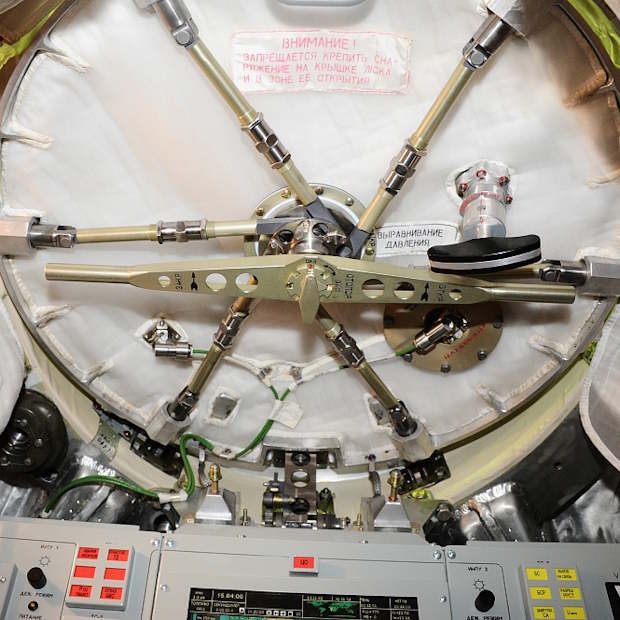
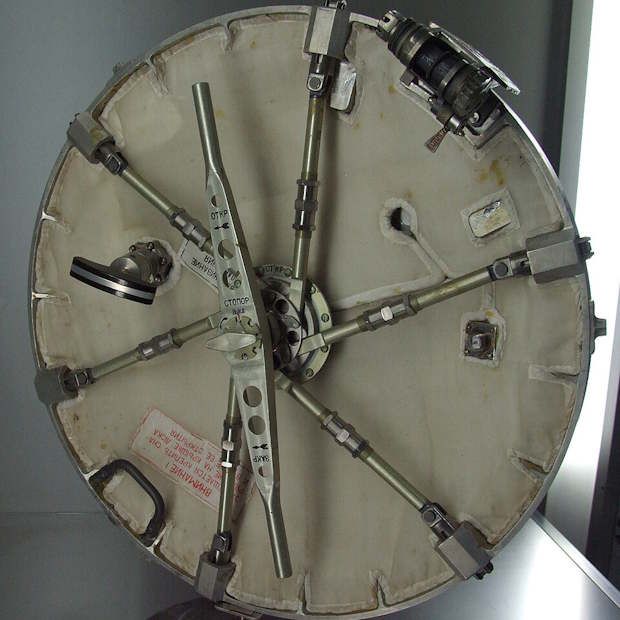
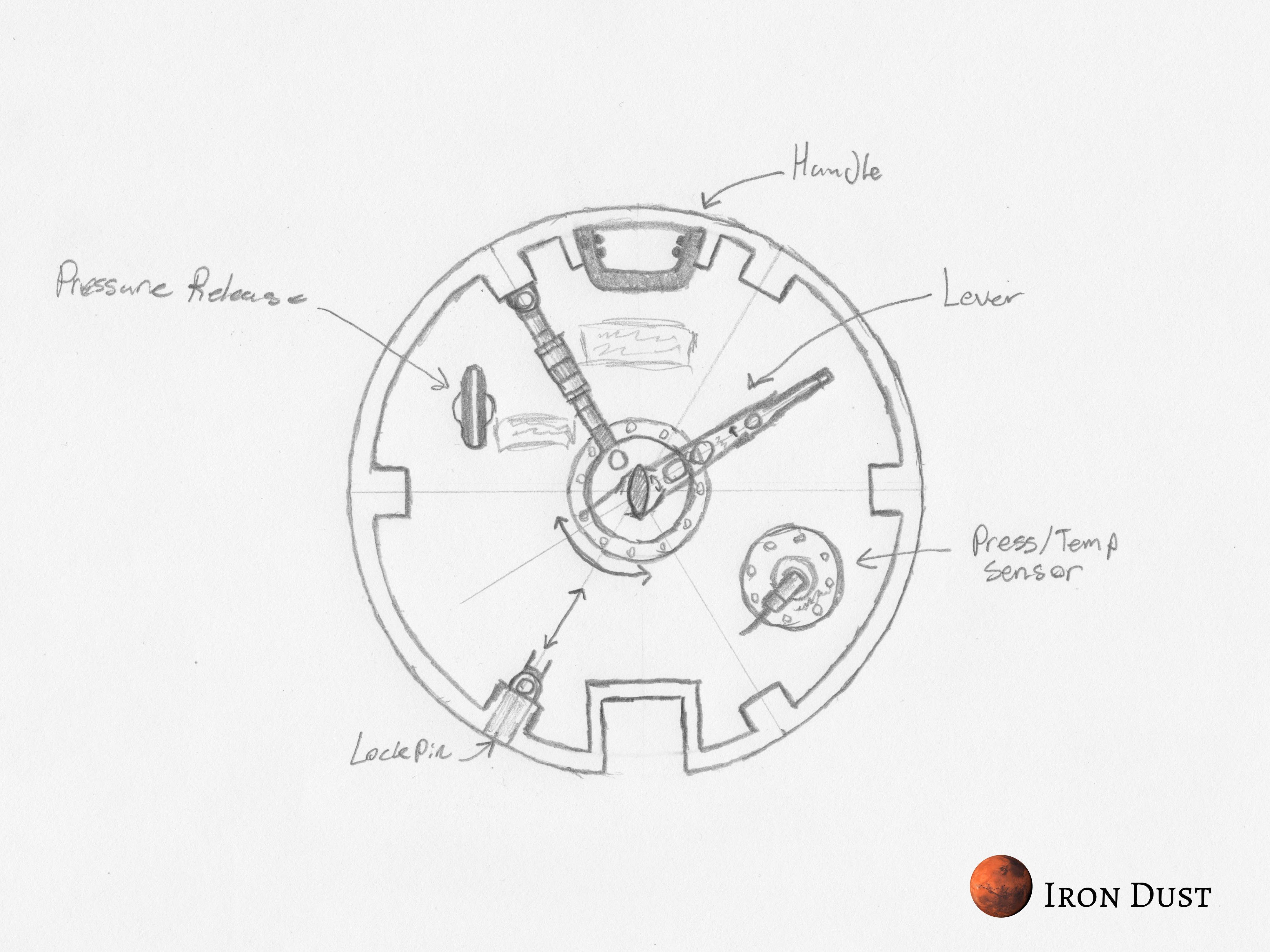
Pencil sketch of Soyuz Hatch showing various functional components.
The Perfect Balance
Before I ventured into the land of milk and honey, I had to pick up some commandments. The most important would be: thou shall not use too many polygons. In the modern bible, that's: go easy with the poly-count. For those not familiar, that's the model's resolution. If we're being very literal, it describes how many triangles make up your model. If you still don't get it, that's ok, no one is judging you.
To lock down my style, I chose to start with something easy, but thematically relevant.


These are both oxygen tanks. They share meshes, but have subtly different textures.
This little project helped me figure out how to draw low-res textures. I used paint.net for both, after finding all alternative programs too complex for my purposes. That includes some Aseprite to Blender integration I found floating around on the interwebs. Still a pretty cool idea.
Anyways...
With the texture style sorted, I got to work on the low-res hatch. This PS2 throwback down below is clearly less spectacular than the one at the beginning of the article. Hence it's dubbed the low-res hatch.

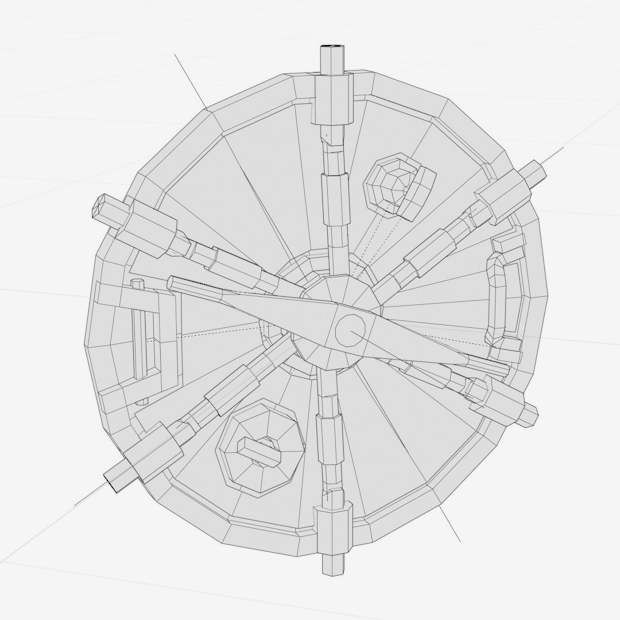
If you're new here, I'll cut you some slack and let you in on a secret. I love kinematics. If it has moving parts, it'll move my heart. I try to express this passion in all my creations. Heck, I'd pretty much always take kinematics over graphics!
Naturally, this found its way into my hatch, and I'm quite proud of the results.
Stepping Up My Game
I'll be honest, I'm a bit torn when it comes to poly-count. Maybe that's why I've dropped the term so many times in this article. Let me load you with some of my burden:
To High-Res
- + Looks good
- - I am mortal, and thus time is a consideration
- + Immersive?
- - Dulls player's imagination
Not to High-Res
- - Two decades out of date
- + I will be able to publish when I'm still young and alive
- + Good canvas for player's imagination
No way to know unless you try, right?
The first thing I did was to give the body of the hatch more sides. It's always best to use the most prevailing shape as a reference for overall model complexity. That way when you take a step back and inspect your latest masterpiece, you can tell if you've made an absolute hash of things.
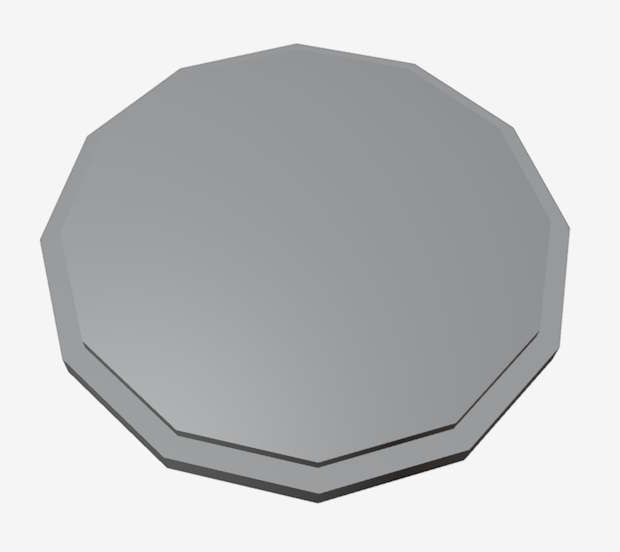
Low-Poly
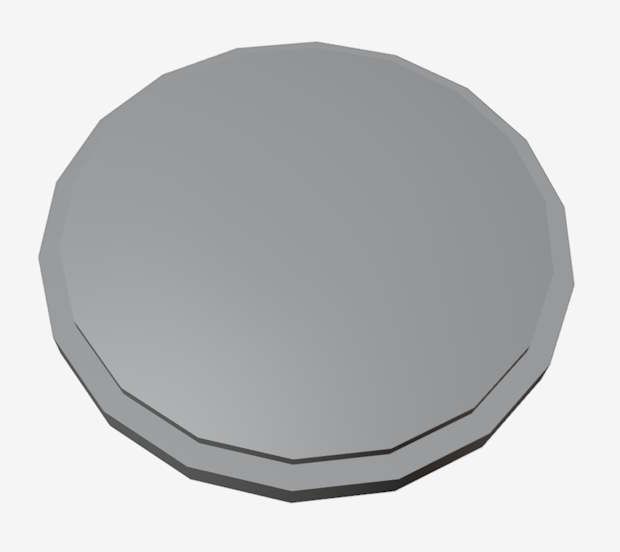
High-Poly
With the foundations down, I got to work modeling. Even though my new model would be high-poly, I still had to be frugal. It is for a game after all...
A New Tool
For my higher-res model, I wanted a higher-res texture. Turns out that when you make one thing nicer, it makes everything around it look a bit worse.
At first, I tried to stay the course. That's to say, hand-drawn textures using Blender's draw tools.
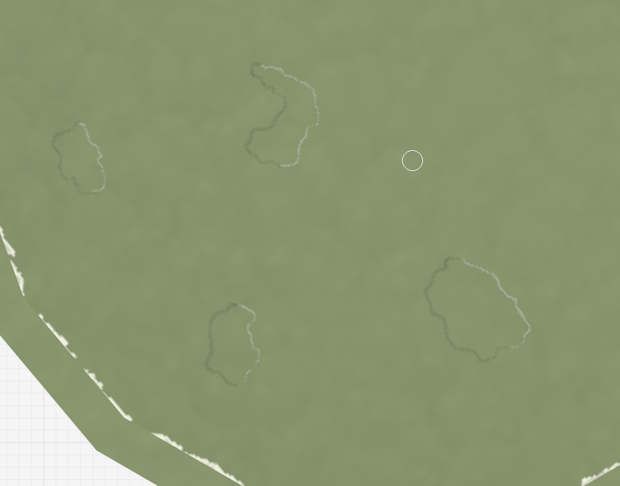
Bump map to show re-painted sections and spots where paint layer is worn.

Edgewear hand-drawn using multiple colors to indicate levels of wear.

Complete backface showing entry soot and damage, including scratches and texturing.
It's not that the results were bad. In fact, in some ways I appreciated the details that came through when everything was done meticulously. Unfortunately, my pesky mortality got in the way. I needed a faster method.
Enter - Adobe's Substance 3D Painter
Substance Painter is an incredible tool. Everything you draw is done so as a "stroke" in 3D space, rather than a transformation and application of pixels to 2D space. Adobe describes this as "non-destructive". That means if you change your UV map, it doesn't affect your textures. Also, you can raise and lower the resolution as much as you want without penalty. Seeing as I'm not the die hard type, I value the ability to make corrections. As you can imagine, I yearn for the pencil days but can still appreciate the merits of the pen.
The most important thing about using Substance 3D Painter was that it opened the door for creativity. Perhaps there may be better solutions out there, but this was a great place to start.
Here's a video showcasing the results. I provided some surroundings so I could explore the motion of the door on its hinge.

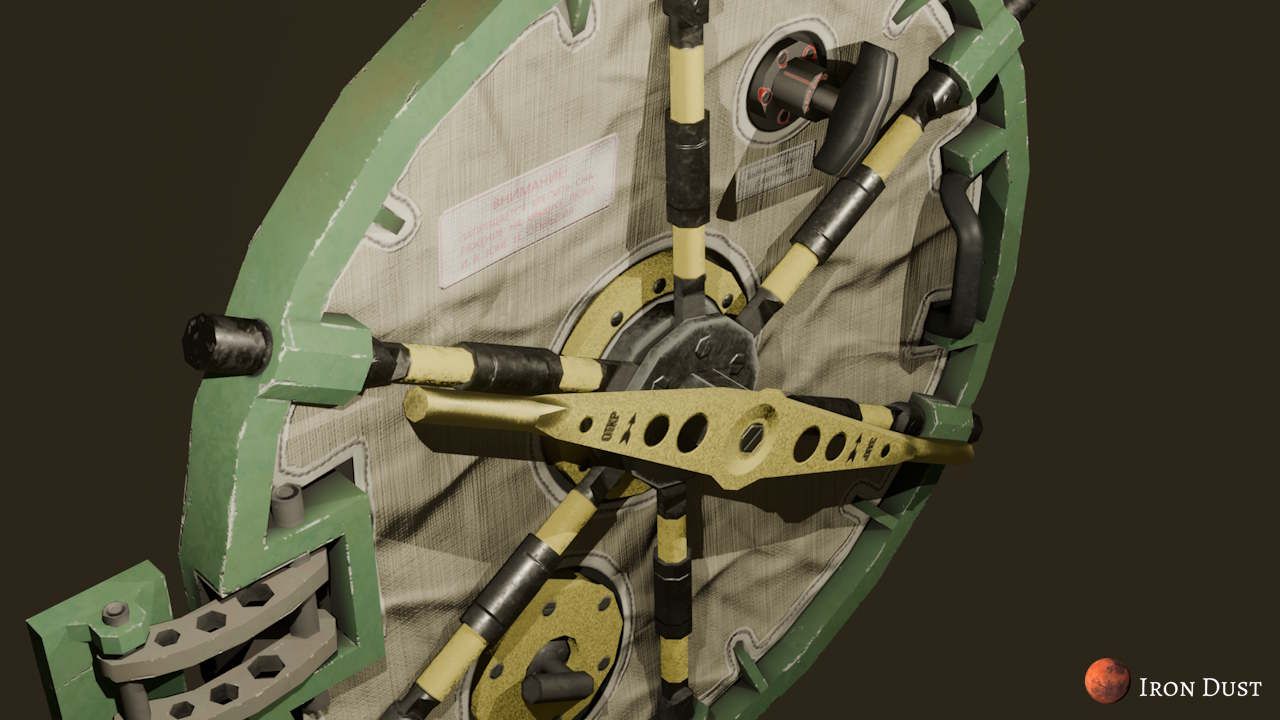
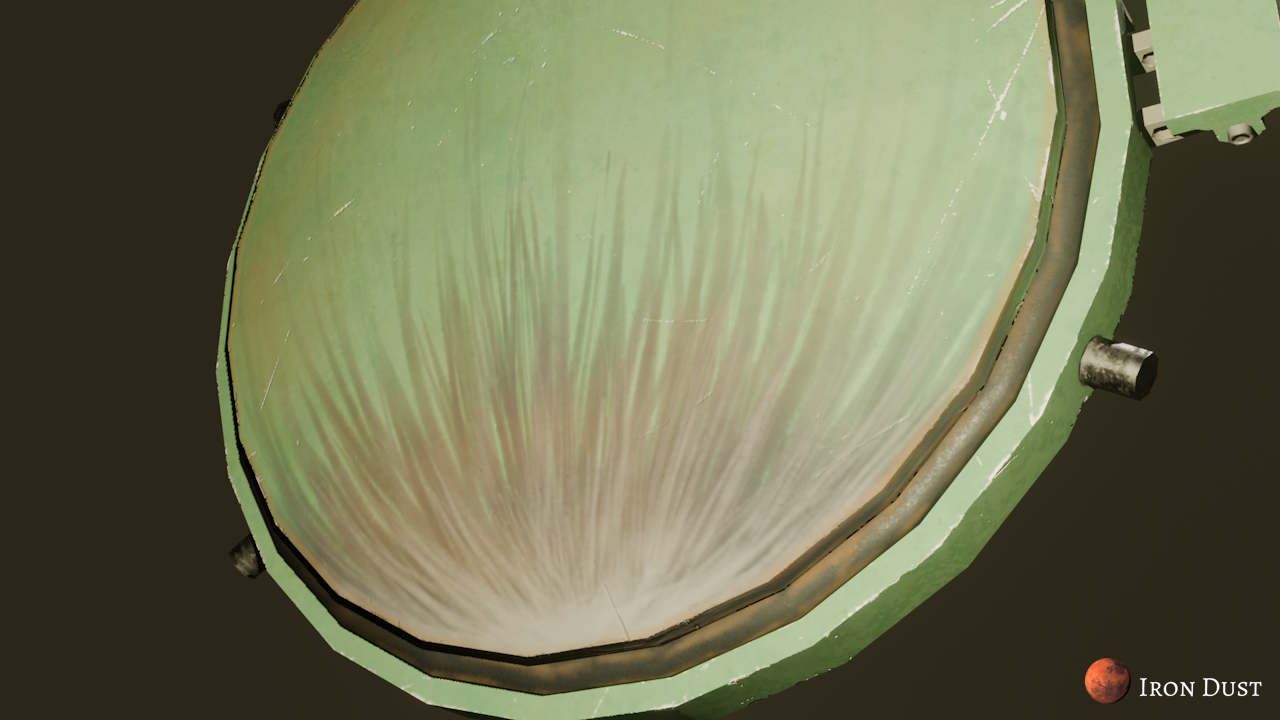
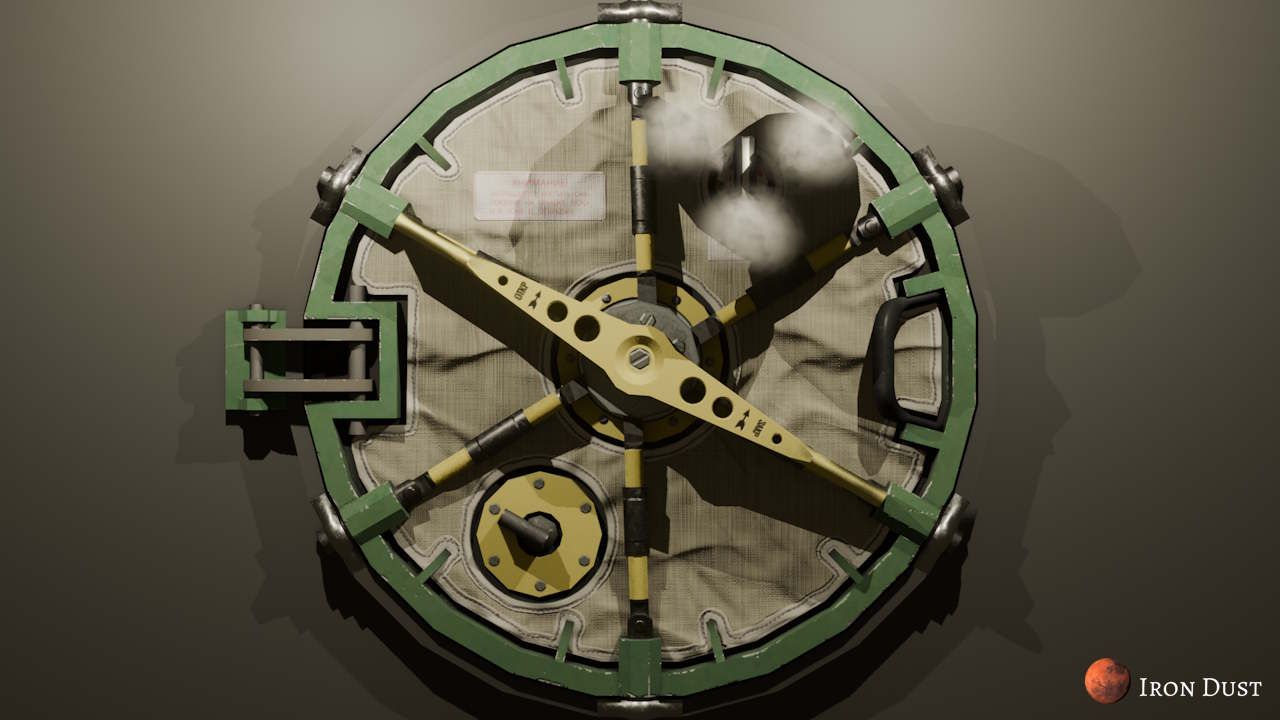
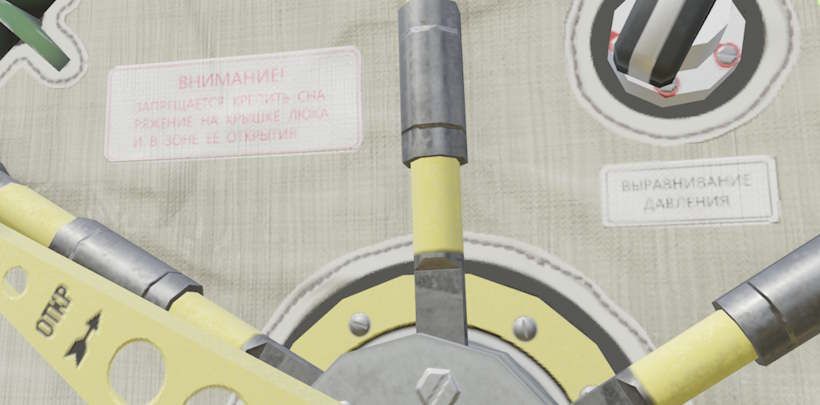
Translations
Внимание! Запрещается крепить снаряжение на крышке люка и в зоне ее открытия - Attention! It is forbidden to attach snap equipment to the manhole cover and to the opening area thereof
Выравнивание давления - Pressure release
What's Next?
There's a long way to go before Iron Dust has its debut. These little experiments, however trivial they might look to some, are important stepping stones for me.
My next destination?
Mars!
